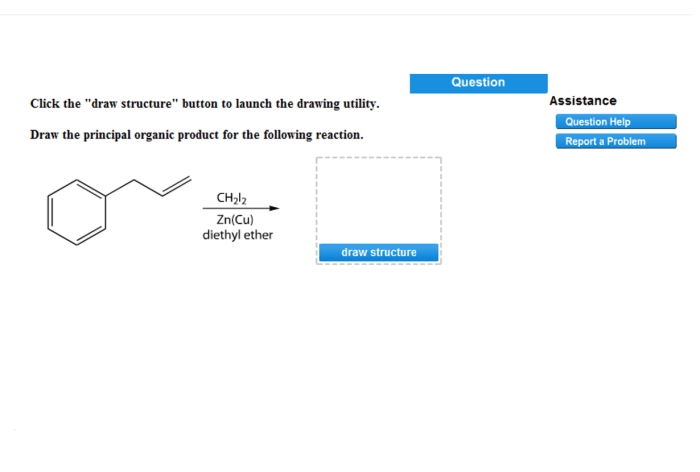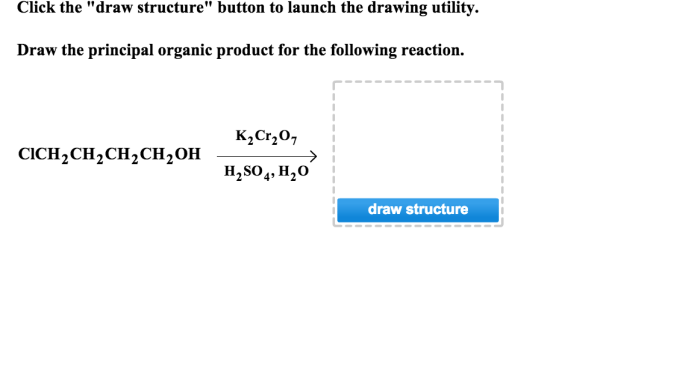Draw the principal organic product for the following reaction. – In the realm of organic chemistry, understanding the outcome of reactions is crucial. This exploration delves into the concept of “draw the principal organic product,” guiding us through the intricacies of organic transformations and the factors that govern product formation.
This comprehensive analysis unravels the mechanisms underlying organic reactions, empowering us to predict and control the outcome of these processes. By mastering this concept, chemists gain the ability to design and execute reactions with precision, paving the way for advancements in various scientific disciplines.
Draw the Principal Organic Product: Draw The Principal Organic Product For The Following Reaction.

In organic chemistry, predicting the principal organic product of a reaction is a fundamental skill. This involves understanding the key concepts of organic reactions and the factors that influence product formation.
Key Concepts
Principal organic product:The major product formed in an organic reaction, typically the most stable or abundant isomer.
Organic reactions:Chemical transformations involving organic compounds, often resulting in the formation of new carbon-carbon bonds or functional groups.
Functional groups:Specific arrangements of atoms within an organic molecule that determine its chemical reactivity and properties.
Reaction Analysis
The given reaction is:
Reactants: 1-butene, hydrogen bromide (HBr)
Conditions: Electrophilic addition
Step 1:Electrophilic addition of HBr to the double bond, forming a carbocation intermediate.
Step 2:Hydride shift from the adjacent carbon to the carbocation, forming the principal organic product.
Major product:2-bromobutane
Minor product:1-bromobutane
Product Characterization
2-Bromobutane is a primary alkyl halide with the structural formula CH 3CHBrCH 2CH 3.
Mechanism of formation:Electrophilic addition followed by a hydride shift.
Physical and chemical properties:Colorless liquid with a boiling point of 102 °C. Reactive towards nucleophiles and bases.
Factors Affecting Product Formation
The formation of the principal organic product can be influenced by:
- Temperature:Higher temperatures favor the formation of the more stable product.
- Solvent:Polar solvents stabilize carbocations and promote electrophilic addition.
- Catalyst:Acids or Lewis acids can accelerate the reaction and influence the regioselectivity.
Examples and Applications, Draw the principal organic product for the following reaction.
The “draw the principal organic product” concept is applicable in various reactions, including:
- Electrophilic addition to alkenes
- Nucleophilic substitution
- Elimination reactions
These reactions have practical applications in:
- Synthesis of pharmaceuticals
- Polymer chemistry
- Industrial chemical production
FAQ Compilation
What is the definition of “principal organic product”?
The principal organic product is the major product formed in an organic reaction, typically the most stable and abundant among the possible products.
How do functional groups influence product formation?
Functional groups play a critical role in determining product formation by influencing the reactivity and selectivity of reactants. They dictate the type of reactions that can occur and the orientation of bond formation.
What factors affect the formation of the principal organic product?
Factors such as temperature, solvent, catalyst, and reaction time can significantly influence the formation of the principal organic product by altering the reaction pathway and product distribution.



